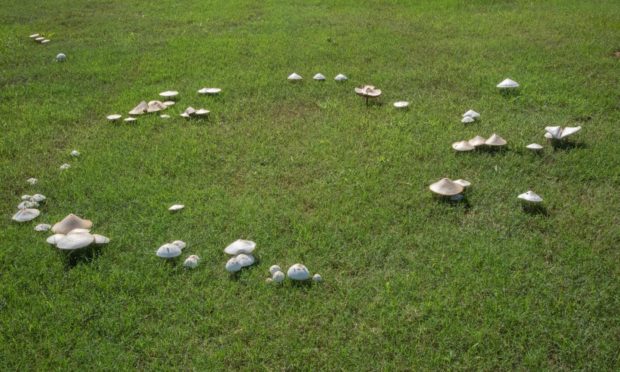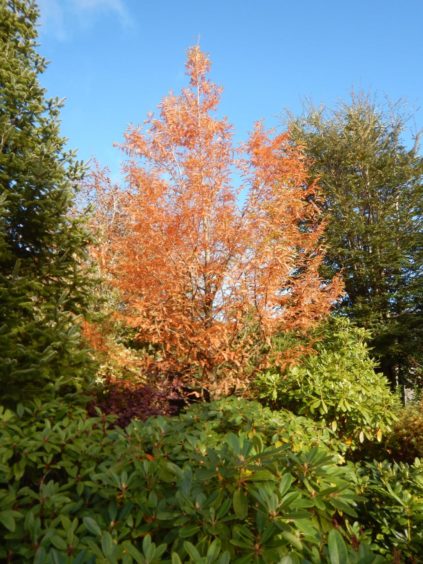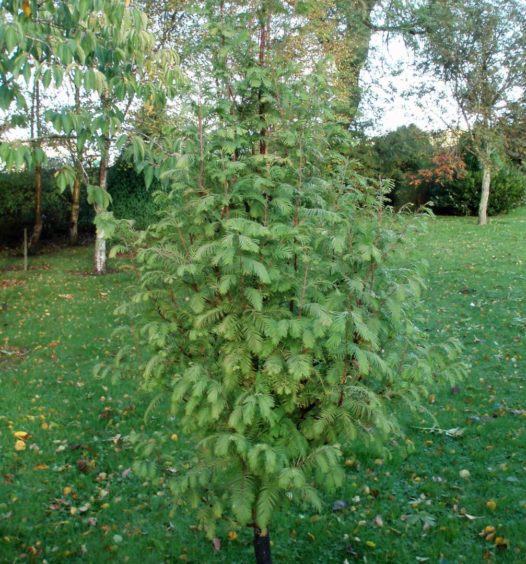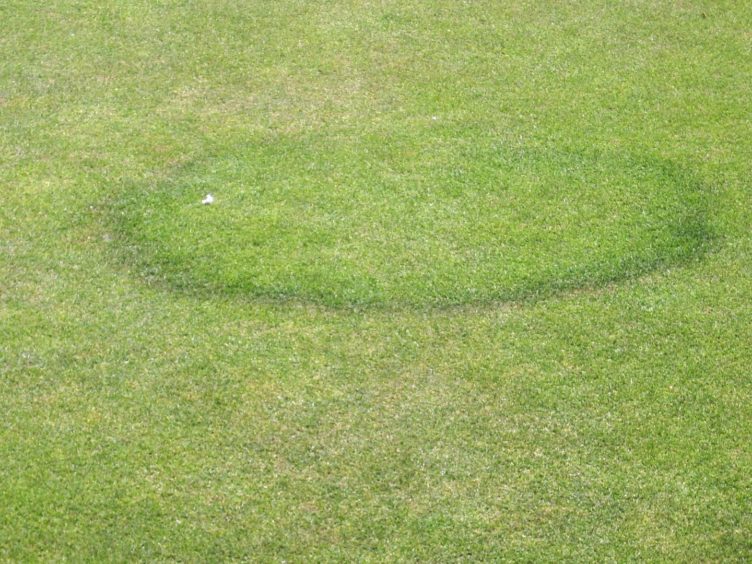It is actually becoming quite noticeable. “What?” I hear you mutter. The changing seasons, of course, but I now think it is becoming MORE noticeable.
As I look out my window as I write this column in very early June, there are two plants which have drawn my attention for the wrong reason.
Nearest is a purple-leaved Japanese Maple, noticeable because the new leaves have not opened fully yet, and further away, on the edge of the drive, is a Metasequoia which is still in bud. This latter specimen is one I have bragged about on many an occasion because it is a quite rare deciduous conifer native to Setchuan, China, known as the Dawn Redwood. Both should be in full leaf by now.
Early potatoes
That train of thought set me wondering how your early potatoes are progressing. With the late cold and frosty weather we have had of late, no doubt a symptom of these climate changes. I guess some will have been frosted. A bit too late now to be advising earthing up, or is it? Not a bit of it!
Not only will further earthing up deal with emerging weeds, it protects the tubers from exposure to light. My own earlies in a raised bed were planted “on the flat” and covered with a sheet of black polythene. The shoots have now appeared through slits subsequently cut in the polythene – so far so good, but they will not be really early “earlies”.
In the more sheltered favoured areas, people will be digging the first of their earlies. As I have probably told you before, when I were a lad, about now, we would be tasting the first of the Ayrshire earlies, grown on the raised beaches down the coast between Girvan and Ballantrae.
The favourite variety at that time was Epicure. The digging of these first earlies coincided with the beginning of the season for Loch Fyne herring. I can remember the guy with pony and flat cart, coming round the doors selling his fish. Fried herring,
dressed with oatmeal, served with boiled Epicures sprinkled with “greentails” (chopped spring onions) and a wee bit of homemade butter, a meal fit for a king!
Reader question
Now to a reader’s question. “We have a Fairy Ring marking our lawn and it is getting bigger. What causes this disfiguring problem and how can I remove it?”
This strange condition is caused by one or more fungus organisms. For those of you who have not come across it before, a circle appears on the lawn, created by the grass itself. Quite suddenly, a roughly circular area of greener grass appears on the lawn which seems to travel outwards. The circle gradually gets larger while the width of the greener band remains fairly constant.
If you look more closely this green band is following on behind a less evident brownish circle, which indicates another phase of the condition. Sometimes there will also be an accompanying circle of toadstools, the fruiting bodies of the fungus. These circles can be from 1m in diameter to 10m or more, whereas the darker coloured band is seldom more than 30cm.
The mechanics are complicated but here goes. As the threads of the fungus (mycelium) travel through the soil it breaks down the organic matter including the dead grass in the surface layers that we often refer to as thatch. This intense activity depletes the soil of moisture and reduces the normal penetration of rain or irrigation water and that is what causes the brown rings to appear.
Toxic gases accumulate in this phase, killing off the mycelium and as result nutrients are released, including nitrogen, which leads to the production of the greener ring of slightly lush, healthier looking grass.
Control is well nigh impossible. High-profile areas that become infected may be stripped of turf, cultivated and then sterilised before being re-sown or turfed. It is a laborious task and not always successful. The more feasible and practical route at this time of year is to scarify to remove that thatch, spike to improve drainage and aeration and feed with a spring and summer fertiliser mix. The entire lawn will then look greener, hopefully disguising the Fairy Ring.
Nowadays, you could explain to inquisitive neighbours that it was part of your re-wilding plan!
Midges
And now back to a much more serious seasonal problem – midges.
The reports are already coming in which suggest that we might be in for more frequent attacks. I believe it was mentioned on Springwatch the other evening.
There are parts of Scotland which are particularly associated with midge “blight”. The west coast is pre-eminent in that regard, but they can be troublesome elsewhere – high summer temperatures together with high humidity seem to provide ideal conditions for the little blighters.
I have a solution if you will forgive the pun and the use of a commercial product. The information was supplied to me many moons ago by a head gardener based in Sutherland, therefore supremely qualified to judge. The answer – Avon Skin So Soft.
I believe there are several additional benefits to using this product as follows:
• Gets rid of fleas
• Relieves itching caused by insect bites
• Sponge it on to screens and around doors and windows to keep insects out
• It kills ants instantly
Correction
Last week my captions to the plant pictures got a wee bit muddled. I made a few suggestions for plants that would tolerate damp shade and dry shade.
The pictures featured were Euonymus Emerald & Gold and Geranium Johnston’s Blue which will tolerate dry shade, and Gaultheria, which is quite happy in damp shade.
Apologies.



